5 Tips for Managing Spring Allergies in Kids
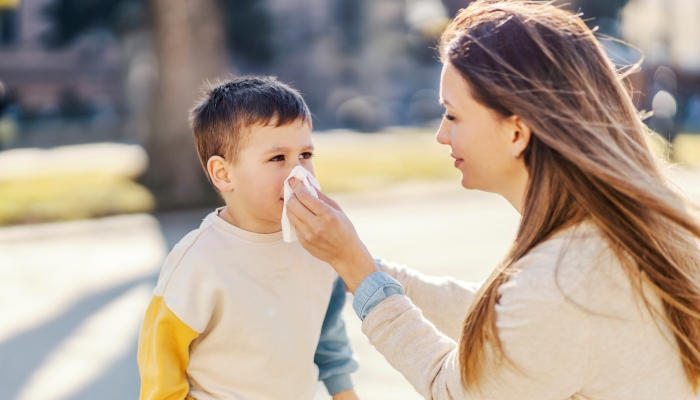
- Spring allergies are often caused by pollen from trees, grasses, weeds, and molds.
- Seasonal allergy symptoms include runny nose, itchy eyes, sneezing, and coughing.
- Children with severe allergies may develop asthma-like symptoms.
- Seasonal allergies can be managed by staying inside on high pollen days, using antihistamines, and keeping air filters inside your home.
Springtime is a wonderful time of year for most families with children. As the days get longer and warmer, parents and their kids can return to the park, resume outdoor playtime, enjoy the spring sporting season, and get more sunshine. However, for kids with allergies, this can be one of the more difficult times of the year.
Dealing with chronic cold-like symptoms for weeks at a time can be frustrating for both kids and their parents. It can be hard to enjoy the beautiful spring weather with an always itchy nose or watery eyes. Some parents dread allergy season, especially those with children who have severe allergy symptoms.
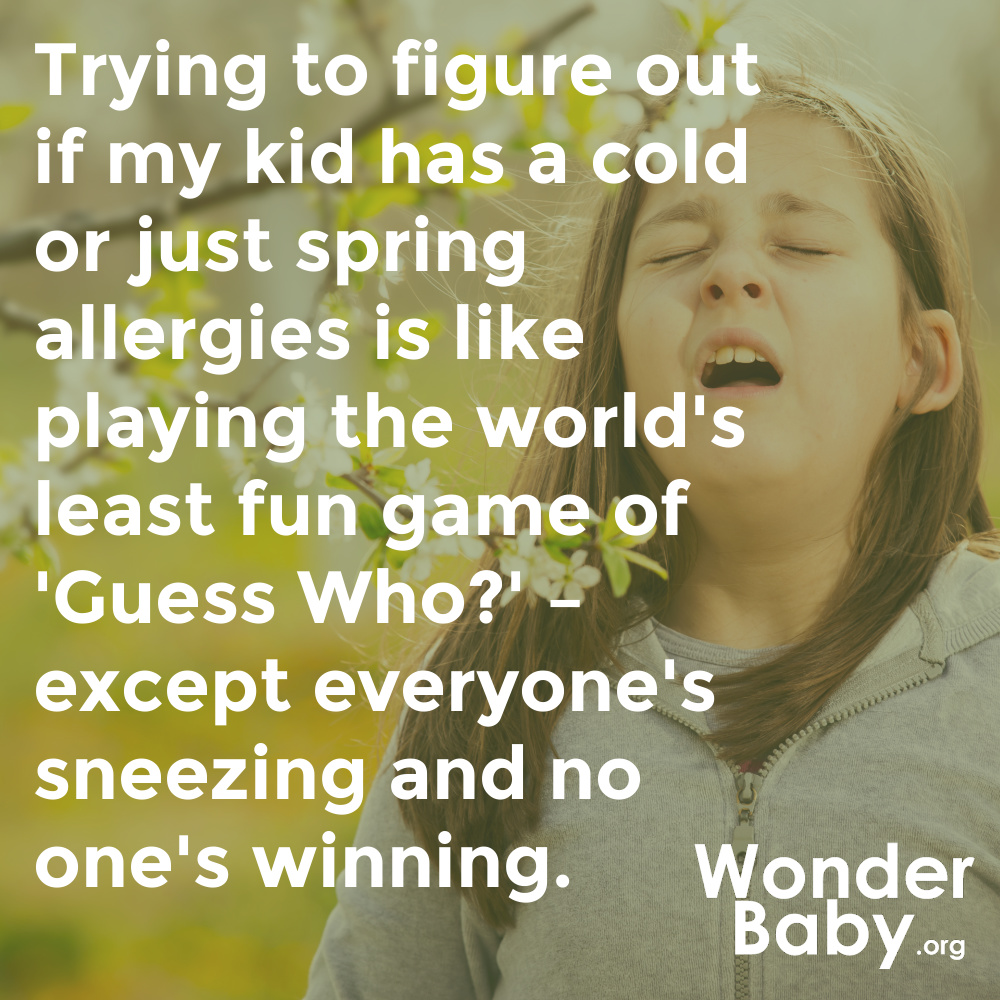
You can help manage your kids’ spring allergies by limiting their exposure to allergens, treating their symptoms, and creating a treatment plan with your family pediatrician.
1. Explore Medication Options
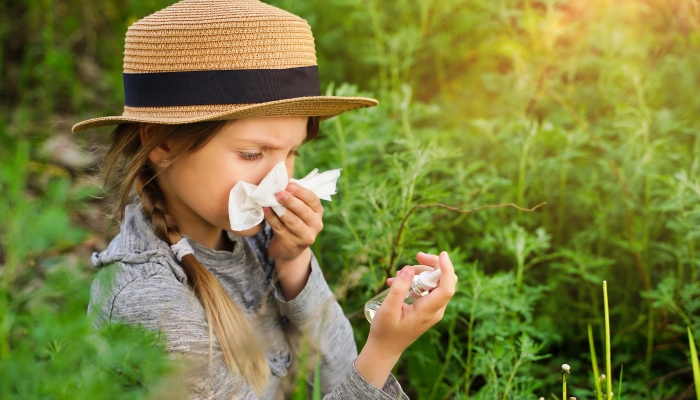
Medications like eye drops, oral antihistamines, and steroid nasal sprays can all be used to help prevent allergy symptoms from impacting your child’s life. However, there are some things you should know about these medications.
| Medication | Uses | Side Effects |
| Antihistamines | Stops itching, sneezing, coughing | Drowsiness |
| Nasal Spray | Decreases congestion | Dry nose, headaches |
| Eye Drops | Relief from itchy, watery eyes | Infection, headache, glaucoma |
| Inhaler | Opens airways during an asthma attack | Fast heart rate, dizziness, jitteriness |
2. Consider Non-Medication Strategies
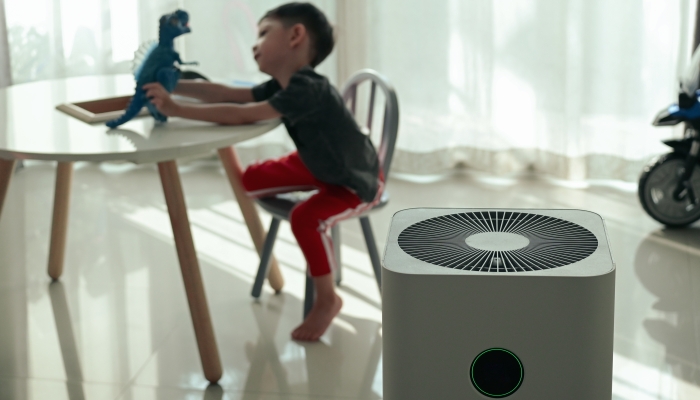
If your child’s symptoms are mild, you may be able to deal with their seasonal allergies without having to use allergy medications. Tips to help your child’s allergies without medicine include:
- Limit exposure to allergens and stay indoors on high-pollen days
- Use air purifiers and change filters regularly
- Bathe and change clothes after all outdoor activities
3. Evaluate Nutritional and Holistic Approaches
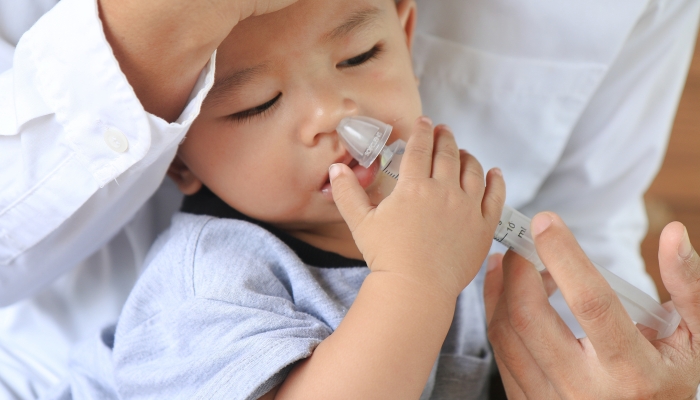
Some parents may want to avoid medication and choose to try nutritional and holistic approaches instead.
Using an unmedicated saline rinse or a neti pot are both safe methods to clear congestion in your child’s nose. Make sure that you use distilled water to avoid infection.
Dr. Eidelman from the Cleveland Clinic11. How To Tame Your Spring Allergies. Cleveland Clinic. 2023. https://health.clevelandclinic.org/how-to-manage-spring-allergies warns against relying too heavily on herbal remedies, especially for the treatment of allergies. Herbal supplements are often untested and unregulated, making them a risky choice for parents to use on their children.
While there is not strong evidence to suggest that dietary changes can improve allergy symptoms, there is certainly no harm in adding more fruits and vegetables to your family’s diet. Getting enough vitamins, minerals, healthy fats, whole grains, and proteins will help your child stay healthier overall.
4. Reduce Indoor Allergens
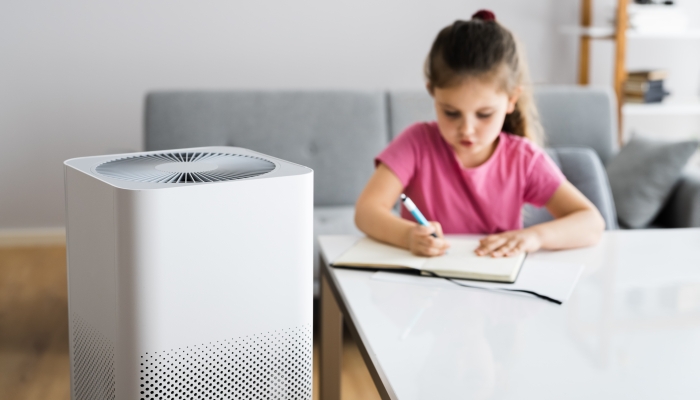
While staying indoors does reduce exposure to allergens, you may still have high pollen counts inside your home during the spring. Getting a HEPA filter for your air conditioner and having your entire family wash their hands with hot water after spending time outside can help.
You may want to purchase an air purifier for your child’s bedroom and have them bathe more frequently during allergy season.
5. Create an Allergy-Friendly Environment at School
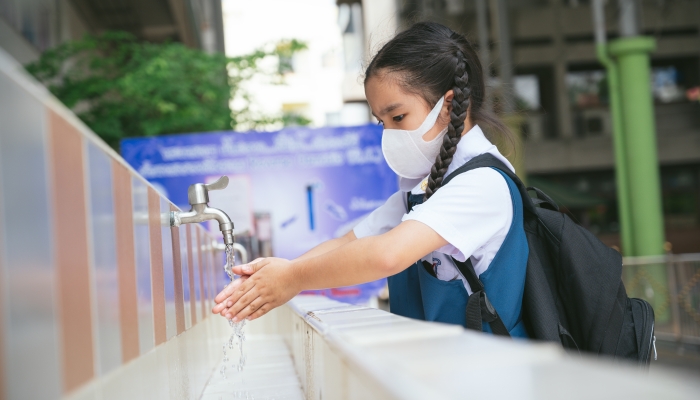
If your child has severe allergies, you may need to speak with their teachers about allowing your child to stay indoors on windy days and days with higher pollen counts. If your child needs to take medication during the school day to manage their symptoms, you’ll need to speak to your child’s teacher, the principal of the school, and the school nurse.
Remind your child to wash his or her hands frequently while at school, and if they suffer from asthma, make sure they know to keep their inhaler within reach at all times.
Understanding Spring Allergies in Kids
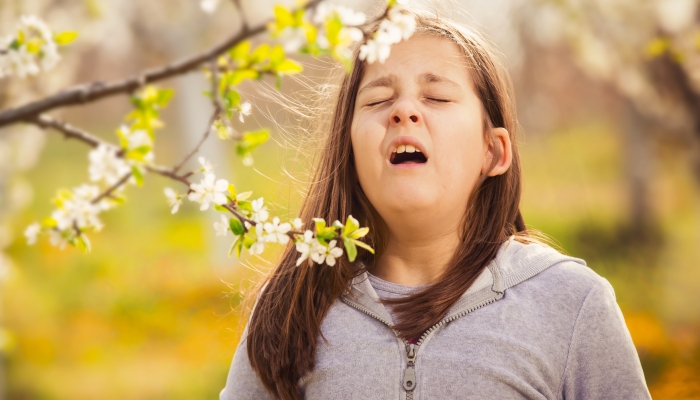
The Children’s University of Chicago22. A Guide to Seasonal Allergies in Kids. Ann & Robert H. Lurie Children’s Hospital of Chicago. 2022. https://www.luriechildrens.org/en/blog/a-guide-to-seasonal-allergies-in-kids/ estimates that around 20% of the population suffers from seasonal allergies. Since allergy symptoms can mimic the common cold, it can be tricky for parents to identify whether or not their child’s symptoms are caused by a virus or seasonal allergies.
Understanding springtime allergies can help you figure out exactly what is causing your child’s itchy eyes and runny nose.
Common Allergens in Spring
Seasonal allergies can be brought on by many different triggers. Determining what is causing your child’s allergy symptoms will help you figure out how to minimize exposure and help your child feel better.
Some of the most common allergens in spring include:
- Tree pollen
- Grass
- Weeds
- Outdoor molds
Symptoms of Spring Allergies in Kids
According to the Asthma and Allergy Foundation of America33. Nasal Allergies (Rhinitis). Asthma and Allergy Foundation of America. 2015. https://aafa.org/allergies/allergy-symptoms/rhinitis-nasal-allergy-hayfever, symptoms of spring allergies include:
- Sneezing
- Coughing
- Runny nose
- Itchy or watery eyes
- Asthma symptoms
If your child exhibits asthma symptoms such as shortness of breath, shallow and rapid breathing, or wheezing, they need medical care right away.
Diagnosis of Spring Allergies
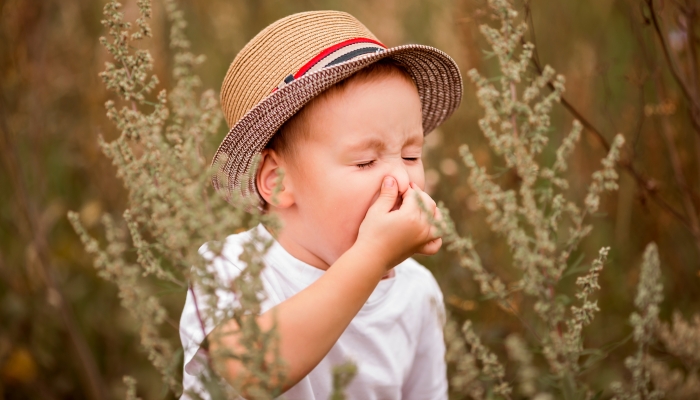
Unfortunately, seasonal allergies are easily confused with the common cold. Your child’s pediatrician can help you get a diagnosis of allergies or viral infection.
When to See a Doctor
Mild allergies can be managed using over-the-counter medications. However, if you find it difficult to control allergy symptoms in your child, you may need to take your child to see a doctor.
Children who have allergy symptoms for more than a few days, experience frequent sinus infections, or are limited in their ability to participate in school or extracurricular activities should see their pediatrician. Allergies may cause your child to have a runny nose during the day and coughing at night.
Allergy Testing
Allergies are caused by the immune system overreacting to specific substances. Some people have more allergy triggers than others, and with seasonal allergies, it can be hard to figure out precisely what is causing the allergic reaction.
A doctor can perform skin prick or blood tests for specific reactions to environmental allergies. These tests can help you limit your child’s exposure to what they are most sensitive to.
The Cleveland Clinic44. Allergy Testing. Cleveland Clinic. 2021. https://my.clevelandclinic.org/health/diagnostics/21495-allergy-testing explains that these tests work by injecting a tiny amount of the allergen underneath the skin, then watching for a reaction, or by taking a blood sample and looking for specific antibodies.
References
- How To Tame Your Spring Allergies. Cleveland Clinic. (2023, March 14). https://health.clevelandclinic.org/how-to-manage-spring-allergies
- A Guide to Seasonal Allergies in Kids. Ann & Robert H. Lurie Children’s Hospital of Chicago. (2022, April 1). https://www.luriechildrens.org/en/blog/a-guide-to-seasonal-allergies-in-kids
- Nasal Allergies (Rhinitis). Asthma and Allergy Foundation of America. (2015, October). https://aafa.org/allergies/allergy-symptoms/rhinitis-nasal-allergy-hayfever
- Allergy Testing. Cleveland Clinic. (2021, July 2). https://my.clevelandclinic.org/health/diagnostics/21495-allergy-testing
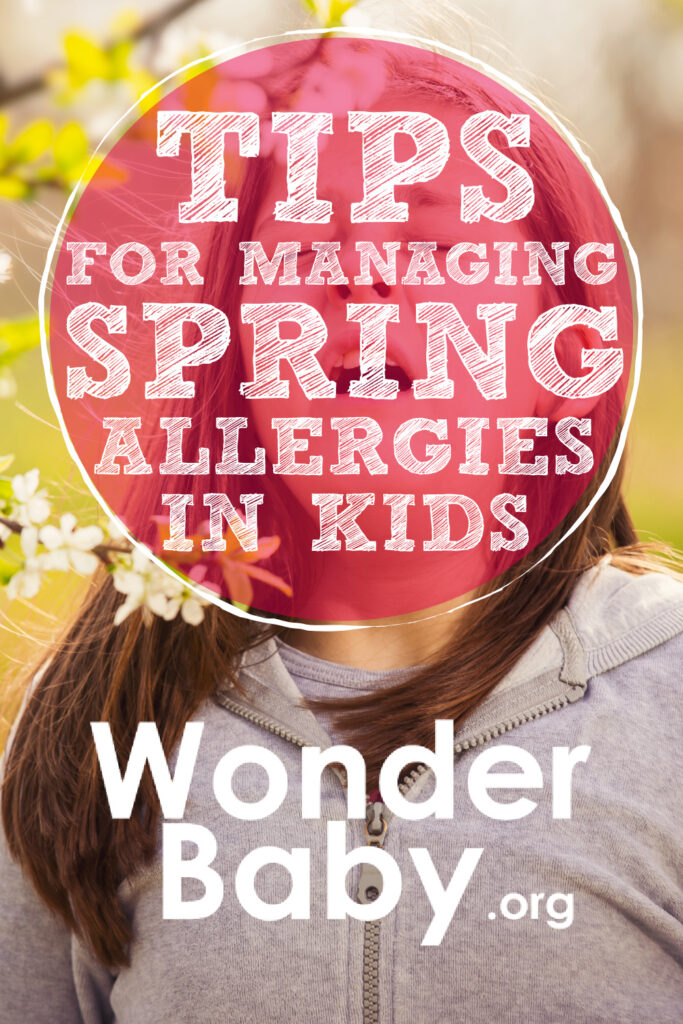
The information WonderBaby provides is not intended to be, and does not constitute, medical or other health advice or diagnosis and should not be used as such. Always consult with a qualified medical professional about your specific circumstances.
Related Posts

Eye Conditions and Syndromes, Visual Impairment
Neuralink Announces Plans to Restore Sight to the Blind with Brain Chip
Elon Musk’s company Neuralink has announced plans to begin human trials of its new “Blindsight” brain chip by the end of 2025.
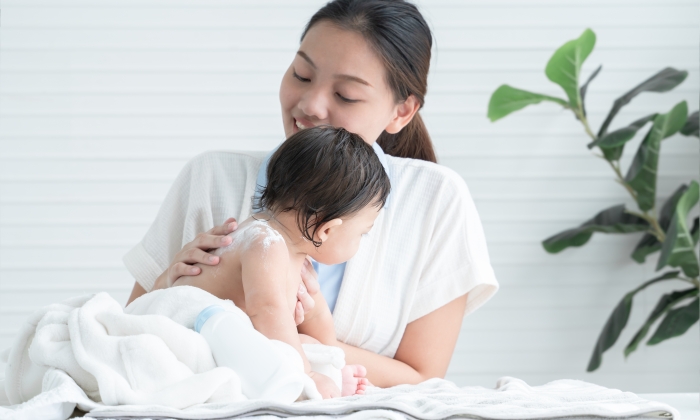
Health & Nutrition
Can Baby Skin Care Products Expire?
Is that forgotten tube of diaper rash cream still safe to use? Learn more about the expiration dates of popular skin care products for infants.

Health & Nutrition
Boosting Immunity in Kids: 3 Tips for a Healthy Winter
Parents can help boost their kids’ immunity during cold and flu season by maintaining healthy eating, sleeping, and exercising habits in the winter.